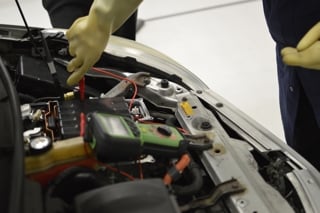Philip Nothard, insight and strategy director at Cox Automotive
Inflated battery costs, which account for some 60% of the total battery electric vehicle (BEV) price, hamper affordability. This is due to rising raw material costs, as OEMs and, by extension, vehicle purchasers shoulder the burden of raw material price increases.
The net impact is yet a further obstacle to the acceptance and adoption of electric vehicles (EVs).
In this context, it pays to understand how raw materials such as lithium, nickel and cobalt are shaping the market.
For instance, cobalt has experienced a slower price increase compared with lithium due to the latter being the most used of all the above raw materials in BEVs.
As a result, manufacturers such as Tesla are moving away from using cobalt in favour of LFP (lithium iron phosphate) battery technology.
The key issue is that, while continued raw material price rises are expected amid sustained demand from BEVs and other forms of transport, it is still being determined whether supply will be able to match demand.
This prompts manufacturers to diversify their battery chemistries and technologies to reduce costs and generate the optimum power density, while still maintaining battery safety.
The pay-off between cost, power density and battery safety is fundamental, and technological innovation will play an essential part in reducing battery costs and manufacturing costs for BEVs in line with those for ICE (internal combustion engine) vehicles.
Price parity will prove a significant turning point for electric vehicle ownership, with estimates forecasting this could happen anywhere between 2025 and 2028.
THE FUTURE OF BATTERY TECHNOLOGY
Step changes in battery technology are expected with the emergence of new battery developments, which can be broken down into three main groups.
At present, different battery chemistries are increasing power, range and charging capability as well as reducing battery costs.
As such, the appeal of battery technology based on cheaper materials, such as lithium-sulphur battery technology (LiSB), is likely to grow and is on track to reach the market by 2030.
Solid-state battery technology incorporates an electrolyte made of solid material, enabling better energy density, reduced risk of fire and superior range – all while minimising the use of cobalt.
Forecasts suggest solid-state batteries will be available on the market between 2026 and 2028.
Finally, lithium-air battery technology pairs lithium and air with an anticipated battery density of 500-700Wh/kg. The battery, which is in very early testing and planning phases, is expected to offer a high energy output, enabling vehicles to exceed ranges of 1,000km (621 miles) on a single charge.
REDUCING BATTERY-RELATED RISK
Battery technology is constantly evolving and, in the short term, one likely outcome is increased volatility in vehicle residual values, particularly for leased or financed cars with long-term contracts.
Finance and leasing companies should also take stock of this while becoming more aware of the risk of some vehicles becoming virtually unmarketable due to insufficient range and charging capabilities.
Understanding battery technology and future battery development should equip the industry with the tools to minimise its exposure to vehicles at risk of obsolescence.



















Login to comment
Comments
No comments have been made yet.